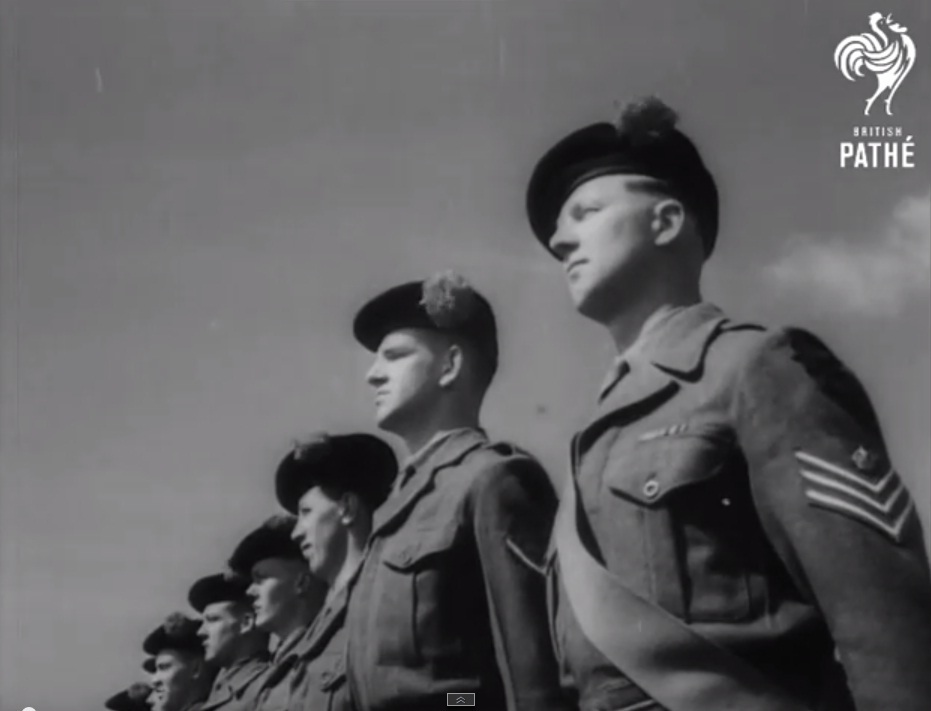For decades, the only way for people to see the news was to visit the cinema where newsreels would be shown before the movies.
Although most homes had a radio, televisions only became popular as prices fell in the 1950s and 1960s.
That meant for much of the 20th century, the only way to actually see the events shaping the world were through newsreels at the cinema.
Path News was the best known producer of these films and now most of the company’s vast archived, operated by British Path, has been made available online.
The company was started in 1910 and operated until 1970.
The producers caught some of the 20th century’s most pivotal events on camera, from British soldiers at the Somme right through to the D-Day landings and beyond.
But they also filmed less Earth-shattering events.
These films provide a fascinating glimpse of times gone by and today we pick out some of the best that show just how Tayside and Fife have been transformed over the decades.
From royal visits to the industries that once supported thousands of families, events big and small were captured on film.
Today we look at Black Watch troops preparing to depart for the war in Korea from their base in the East Neuk, take a trip underground with the Queen in Glenrothes and have a look at the Tay Road Bridge under construction.
In the final part of our series tomorrow (WED), we’ll take a look at some of the sporting highlights provided by Path, from long-gone names such as Third Lanark to crooner Bing Crosby proving he still knew how to swing on the Old Course in 1950.
All of the films, and thousands more, are available through British Path’s YouTube channel.
New Tay Bridge Under Construction:
https://youtube.com/watch?v=tM0MvvLAwUs%3Frel%3D0%26showinfo%3D0
This film from 1965 shows the final stages of construction of the Tay Road Bridge,
The silent film shows the bridge the year before it was officially opened by the Queen Mother.
Although there is no narration, the film provides a fascinating glimpse of Dundee over 50 years ago.
It also features footage of the ferries that were used to transport vehicles over the Tay before the bridge finally opened.
Queen Mother inspects Black Watch Troops at Crail camp:
https://youtube.com/watch?v=Pn6N9TkwDis%3Frel%3D0%26showinfo%3D0
Crail airfield has gone through many changes over the years.
Although empty for years, most recently it has been used for car racing and home of popular car boot sales.
There are now plans to build homes on the land but this video dates from when it was still in military use.
This video from 1954 shows the Queen Mother inspecting Black Watch troops before they depart for Korea.
The Queen meets miners at Rothes Colliery:
https://youtube.com/watch?v=uF3nuJ9-Y8c%3Frel%3D0%26showinfo%3D0
Once known as Scotland’s “super pit” Rothes Colliery was once the most modern mining operation in the UK and the reason the town of Glenrothes was built.
This clip from 1958 shows the Queen breaking mining tradition by taking a trip underground- superstitious miners believed it was considered unlucky to let a woman go down a mine.
She was the first reigning monarch since George V in 1912 go into a working mine.
The mine was first opened in 1957 but closed just eight years later because of flooding and other geological issues, although this considered down to bad planning rather than bad luck.
The Path report notes the Queen manages to make a white boiler suit look “glamorous.”
A fighting spirit:
https://youtube.com/watch?v=Z8PCXK1Ufw4%3Frel%3D0%26showinfo%3D0
This 1922 video shows Winston Churchill returning to Dundee in 1922, just before he lost the parliamentary seat he had represented since 1908.
Mr Churchill had just had an operation to remove his appendix.
The operation was performed by surgeon Thomas Crisp English, who saved Churchill’s life by diagnosing appendicitis and insisting on the operation.
The future prime minister had complained of suffering severe indigestion for a week but had intended on travelling to Dundee to campaign for his seat.
Did the delay cost him his seat?
